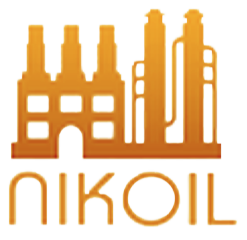Our Technology
Thermal Plasma
Thermal plasma refers to a state of matter in which a gas is heated to extremely high temperatures, typically ranging from several thousand to tens of thousands of degrees Celsius. It is an ionized gas that contains free electrons and positive ions.
Plasma is often referred to as the fourth state of matter, distinct from solid, liquid, and gas. In thermal plasma, the gas is heated to such high temperatures that a significant number of atoms are dissociated into ions and free electrons. This results in the gas becoming electrically conductive and exhibiting unique properties.
Thermal plasma is created by subjecting a gas to a high-energy source, such as an electric arc, microwave, or radio frequency. The intense heat causes the gas to ionize and form a plasma. This ionization process imparts the plasma with several distinctive characteristics, including high energy density, high reactivity, and the ability to carry an electric current.
Nano Technology
“Nanotechnology,” is a field of science and technology that deals with the manipulation and control of matter at the nanoscale. Nanoscale refers to the dimensions on the order of nanometres, which is one billionth of a meter.
Nanotechnology involves the study, design, and application of structures, devices, and systems at the nanoscale level. It enables the ability to engineer and manipulate materials and systems with unique properties and functions due to their small size.
Nanotechnology has broad-ranging applications across various fields, including electronics, medicine, energy, materials science, and environmental science. It has the potential to revolutionize industries by offering improvements in areas such as miniaturization, enhanced materials properties, targeted drug delivery, efficient energy storage, and advanced sensors.
Plasma Technology
Plasma technology refers to the use and application of plasma, which is an ionized gas consisting of positively charged ions, free electrons, and neutral particles. Plasma is considered the fourth state of matter, distinct from solid, liquid, and gas.
Plasma technology involves harnessing the unique properties of plasma for various applications. Plasma can be created by subjecting a gas to a high-energy source, such as an electric arc, radio frequency, or microwave. The energy input causes the gas to ionize and form a plasma state.
Plasma technology finds application in a wide range of fields, including:
- Manufacturing and Materials Processing: Plasma can be used for surface treatment, such as cleaning, etching, and modifying the properties of materials. It is utilized in industries like semiconductors, electronics, and coatings.
- Environmental Remediation: Plasma technology is employed for the treatment of pollutants and waste materials. Plasma can decompose or convert hazardous substances into less harmful forms.
- Medicine and Biotechnology: Plasma has applications in sterilization, wound healing, cancer treatment, and tissue engineering. Cold atmospheric plasma is used for non-thermal medical treatments.
- Energy and Lighting: Plasma can be used in applications such as plasma display panels, plasma-assisted combustion, and plasma-based lighting sources like fluorescent lamps.
- Aerospace and Space Exploration: Plasma technology is utilized in ion thrusters and plasma propulsion systems for spacecraft.
Plasma technology continues to advance and find new applications as researchers explore its unique properties and potential across various scientific and industrial domains.
Water Cut
Water cut technology, also known as water cut meters or water cut analyzers, is a technology used in the oil and gas industry to determine the amount or percentage of water present in produced oil or gas streams. It plays a crucial role in monitoring and optimizing production operations.
When oil or gas is extracted from reservoirs, it is often accompanied by water. The water cut refers to the proportion of water in the total volume of the produced fluid. The accurate measurement of water cut is essential for assessing the efficiency of production processes, evaluating reservoir performance, and ensuring compliance with regulatory standards.
Water cut technology typically involves the use of specialized sensors or analysers that can differentiate between oil, gas, and water. These devices are installed in production lines or wellheads to continuously monitor and measure the composition of the produced fluid. They employ various principles and techniques such as capacitance, microwave, impedance, or radioactive isotopes to analyse the fluid composition and determine the water cut.
By obtaining real-time data on water cut, operators can make informed decisions about production strategies, well management, and facility optimization. It helps in maximizing oil or gas recovery, preventing corrosion and damage to equipment, and managing water disposal or treatment processes efficiently.
Accurate water cut measurement is crucial for the economic and operational success of oil and gas production, as it provides insights into the fluid composition and helps in maintaining the desired quality and purity of the product.
Artificial Intelligence
AI, or Artificial Intelligence, refers to the development of computer systems that can perform tasks that typically require human intelligence. It involves creating algorithms and models that enable machines to analyse data, learn from it, make decisions, and perform actions based on the acquired knowledge.
AI encompasses various techniques such as machine learning, natural language processing, computer vision, and robotics. Its applications range from virtual assistants and autonomous vehicles to medical diagnosis and industrial automation. AI aims to replicate or enhance human intelligence to solve complex problems, automate tasks, and improve efficiency across different domains.
Oil Pre-Treatment
In our refineries before we put the crude oil to the CDU, we perform the fowling:
- Demineralization
- Dehydration
- Desalination
- Stabilization
- Desulphurization
- Hydro treatment
- Cracking heavy factions
Which, we call it Pre-Treatment.
